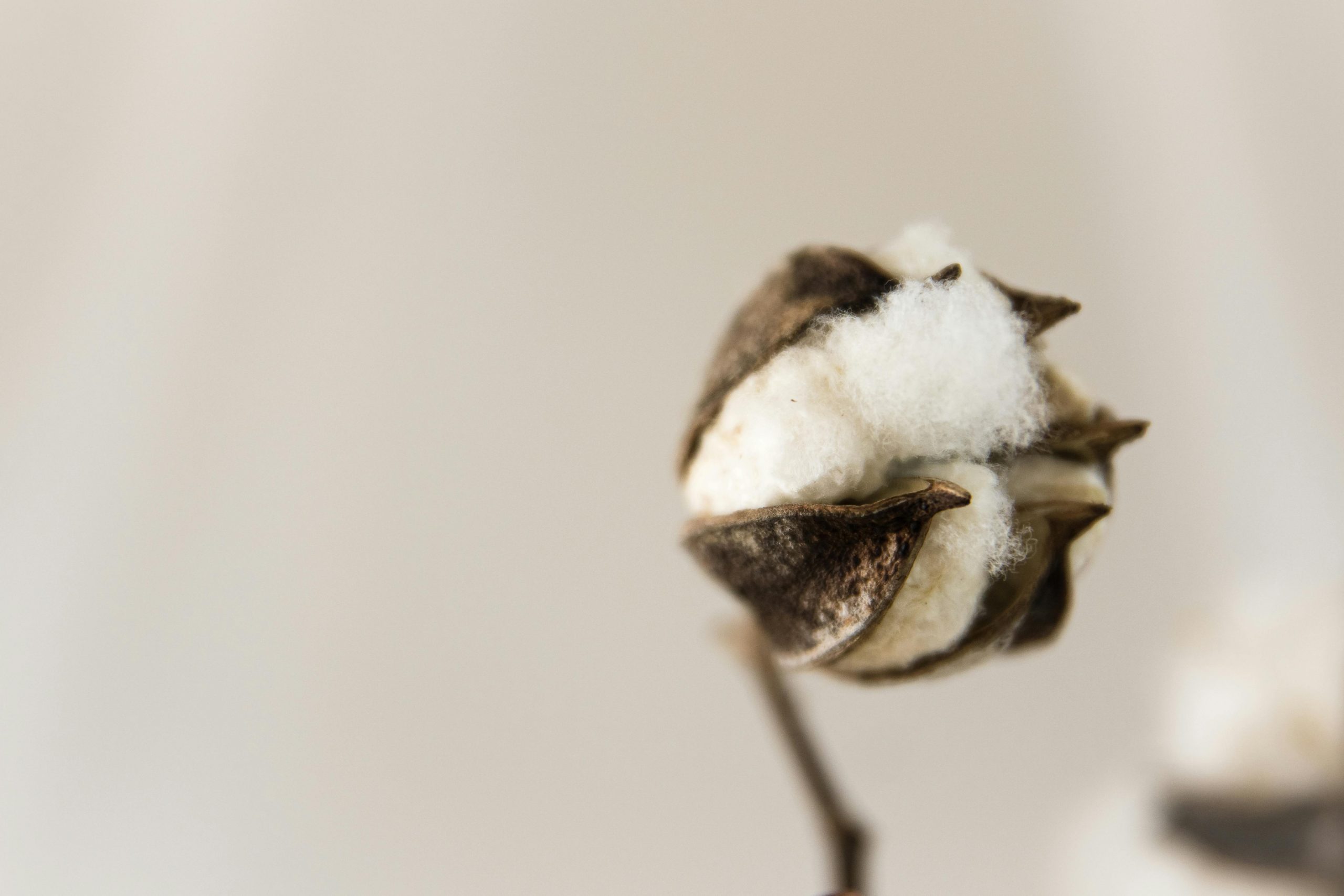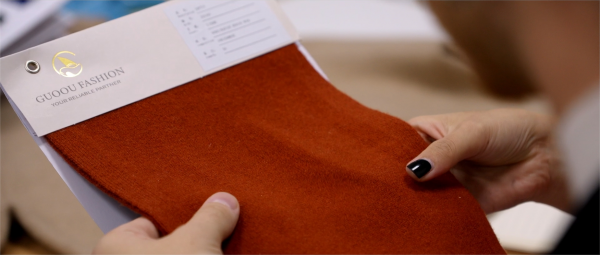Sustainable fibers are dedicated to reducing environmental impact while also ensuring ethical behavior. Unlike conventional fibers, which may involve harmful chemicals and unconstitutional labor practices, sustainable fibers are derived from environmentally friendly sources and have a fair distribution of labor.
Adopting sustainable fibers is paramount to brands that want to satisfy consumer demand for environmentally friendly products, increase their brand reputation, follow environmental regulations, and have cost efficiency. Sustainable fibers can also be used to enhance the unique characteristics of your brand to attract consumers.
This article is intended to serve as a resource for clothing brand owners in regard to choosing and utilizing environmentally friendly fabrics.
Popular Sustainable fabrics
Selecting the appropriate fabric is of paramount importance to creating environmentally friendly clothing and accessories, and understanding the benefits of sustainable fabrics can help you develop a brand’s reputation. Each fabric type has a distinct environmental benefit and practical application, these associations help you to associate your brand with environmentally friendly practices while also providing quality, fashionable clothing. Here, we’ll talk about some of the most popular environmentally friendly fabrics and why they are great candidates for your clothing brand.
Algodón Orgánico fabric

Organic cotton fabric is made from cotton that is cultivated without the use of pesticides or fertilizers. It’s supple and inviting on the skin, making it a popular choice for everyday clothing that is comfortable. By wearing outfits made of organic cotton, you commit to environmentally friendly farming methods that preserve the soil and diminish chemical utilization. Compared to conventional cotton, organic cotton utilizes less water and avoids harmful chemicals, all of which make it a more environmentally friendly choice. Additionally, it’s biodegradable, which is more beneficial to the planet. Also, organic cotton is considered to have a hypoallergenic attribute; this is ideal for people with sensitive skin. Best for daily wear like T-shirts, dresses, and casual clothing. It’s ideal for items that come in contact with your skin often and provide both relaxation and environmental benefits.
Recycled Polyester fabric
Recycled polyester fabric is composed of bottles that are reused and other waste materials. It’s long-lasting, moisture-wicking, and maintains its color, which makes it a versatile choice for a variety of purposes. By choosing polyester that is recycled, you contribute to the reduction of plastic waste and the conservation of resources. The procedure of producing recycled polyester is more energy-efficient than creating new polyester; this procedure also lowers greenhouse gas emissions. Additionally, it is often highly colorfast and long-lasting. Best for items that require activity, entertainment, and fashion. It’s a wonderful method of converting plastic trash into useful textiles while promoting a circular economy.
Linen fabric

Linen fabric is composed of the fibers of the flax plant, and it is well-known for its strength, breathability, and natural beauty. Linen is highly porous and quickly dries, which is ideal for clothing that is warm. The procedure of manufacturing linen utilizes fewer pesticides and less water than other plants. This has a positive environmental impact. Additionally, linen’s softness increases with each wash, and its unique aesthetic is derived from the natural texture. Ideal for garments that are appropriate for the summer, such as shirts, dresses, and accessories that are lightweight. Its long life and breathability make it ideal for temperate climates, it provides both comfort and style.
Tencel fabric
Tencel fabric is produced from sustainably gathered wood pulp, this is typically from eucalyptus trees. It’s renowned for its silky sensation, airiness, and pleasant drape. The procedure for producing Tencel is closed-loop, which means that it recovers water and other solvents, this minimizes the environmental impact. Tencel also has a moisture-wicking property that facilitates your cooling down and keeping you dry. It’s distinguished by a luxurious design and a soft feel to the skin, which is ideal for high-end fashion. Best for dresses, blouses, and skirts. Tencel combines long-term viability with aesthetics, it provides a superior option for fashionable and environmentally friendly clothing.
Bamboo fabric
Bamboo fabric is derived from bamboo pulp, this fabric is valued for its softness and natural properties that combat bacteria. Bamboo’s growth is rapid and chemical requirements are lower than other fibers, as a result, it’s an environmentally friendly choice. The fabric’s fibers are highly-absorbing and breatheable, which provides comfort and control of moisture. Also, bamboo has a natural anti-fungal capacity, which can be beneficial to sensitive skin. Best suited for casual wear, underwear, and domestic textiles. Its softness and breathability attribute makes it ideal for clothing that needs a delicate feel, it provides a sustainable option for a comfortable shirt.
Cachemira fabric
Cashmere fabric is derived from the undercoat of cashmere goats, this fabric is noted for its exceptional softness and exceptional warmth. When acquired in a responsible manner, cashmere can be considered a sustainable option that advocates ethical farming methods and promotes the welfare of the goats. High quality cashmere is prone to a long lifespan if cared for properly, it provides exceptional insulation. It’s also malleable and possesses a plush, soft texture. Best for extremely warm sweaters, scarves, and shawls. Cashmere is both luxurious and environmentally friendly, it’s ideal for high-end, warm, and comfortable clothing.
Wool Fabric

Many animal fibers, including wool, are environmentally sustainable when harvested in a responsible manner, this supports renewable resources and biodegradable products. Wool is naturally flexible, breathable, and promotes body temperature regulation, it is therefore versatile in regards to climate. It additionally possesses natural moisture-wicking properties and is resistant to flame. Different types of wool have different properties like softness and warmth, these benefits are attributed to different types of animals like alpaca and merino. Best for sweaters, stockings, and knitted additions. The insulating properties of wool, as well as its durability, make it an exceptional choice for both cold-weather and summer clothing, this combination provides both comfort and sustainability.
Other Innovative Sustainable fabrics
These include fibers derived from plants like seaweed, soybeans, and bananas, each having its own benefits and environmental advantages. Banana fibers are both lightweight and strong, they are ideal for summer clothing, while soy fibers are soft and have a similar texture to silk, this makes them suitable for luxury fabric. Seaweed-based fibers have a natural ability to inhibit the growth of bacteria, a property that can be used to replace traditional fibers. By taking these innovative approaches, you promote the utilization of waste products or easily replenishable resources, this will reduce the environmental impact. Best for specialized purposes that depend on the material—banana fibers for lightweight summer clothing, soy fibers for soft, high-end fabric. These creative fabrics increase the sustainability of the fabric while providing a unique flavor and benefits.
How to Choose the Right Sustainable fabric for Your Clothing Brand
Selecting the appropriate sustainable fabric for your clothing brand can be described as a significant task, but it’s primarily concerned with finding the right harmony between your brand’s principles, the fabric’s properties, and the needs of your customers.
1. Define Your Brand’s Sustainability Goals
Start by defining what sustainability means to your brand. Are you attempting to reduce the environmental impact, promote ethical behavior, or both? Understanding your core values will help you in choosing fabrics that concur with your philosophy.
- Eco-Friendly Impact: Look for fabrics that have a low environmental impact, for example, those made from recycled materials or cultivated crops that are sustainably harvested.
- Ethical Sourcing: fabrics that are certified by organizations like GOTS or OEKO-TEX are considered ethical, these organizations ensure that labor is fair and the production is responsible.
2. Think About Fabric Performance
Different types of fabric have different properties. Think about these essential qualities in order to make sure your fabric meets your intended goal:
- Durability: Items that will be heavily used, such as sweaters or athleticwear, should have long-lasting and strong fabrics chosen for them. Wool and repurposed polyester have a long lifespan.
- Breathability: If you’re crafting summer apparel or athletic gear, seek out fabrics that are breathable and water-resistant, such as linen or bamboo.
- Comfort: For luxurious and inviting garments, soft fibers like cashmere or Tencel are ideal for adding a little more aesthetics and coziness.
3. Match Fabric to Your Product’s Purpose

Think about what your clothing will be utilized for and choose the most appropriate fabric:
- Casual Wear: For everyday clothing like shirts and dresses, natural cotton and bamboo fibers are both soft and breathable, this combination is ideal for daily comfort.
- Activewear: For athletic clothing that is designed to withstand sweat and motion, recycled polyester provides stability and moisture control.
- Items that are luxurious often have a rich composition of cashmere,wooland Tencel, they are both soft and sophisticated, and they are perfect for high-end fashion.
4. Check Environmental Impact and Certifications
When choosing sustainable fabric, it’s important to keep an eye on both cost and availability to ensure your brand’s production runs smoothly.
- Budget-Friendly Choices: Sustainable fabrics can vary in price. Find options that offer a good balance between cost and eco-friendliness. While some sustainable fabrics might be a bit more expensive, they can often provide long-term benefits and align with your brand’s values.
- Reliable Supply: Ensure that the fabric you choose is consistently available from reliable suppliers. You don’t want to face unexpected shortages or delays that could affect your production schedule. Check with suppliers about their stock levels and lead times to make sure you can get the fabric you need when you need it.
5. Consider Cost and Availability
When choosing sustainable fabric, it’s important to keep an eye on both cost and availability to ensure your brand’s production runs smoothly.
- Budget-Friendly Choices: Sustainable fabrics can vary in price. Find options that offer a good balance between cost and eco-friendliness. While some sustainable fabrics might be a bit more expensive, they can often provide long-term benefits and align with your brand’s values.
- Reliable Supply: Ensure that the fabric you choose is consistently available from reliable suppliers. You don’t want to face unexpected shortages or delays that could affect your production schedule. Check with suppliers about their stock levels and lead times to make sure you can get the fabric you need when you need it.
6. Test fabric Samples
Before committing to a large amount, get samples of the fabrics that you want to purchase. Testing them out is beneficial:
- Evaluate quality: feel the fabric, assess the color, and observe how the fabric affects your design.
- Ensure compatibility: Make sure the fabric is appropriate for your manufacturing process and intended design.
After considering all of these factors, choose the fabric that best represents your brand’s values, product characteristics, and budget. If you’re still unsure of the most sustainable fabric type for your brand’s clothing, or want to receive personalized guidance, don’t hesitate to contact us. Our team of experts is here to assist you in navigating your options and making the best decisions regarding your brand and products.
Conclusión
Understanding and selecting environmentally friendly fabrics is pivotal in the creation of any clothing brand that is committed to environmental responsibility and ethical behavior.
As you progress towards integrating sustainable fibers into your clothing line, it’s important to understand how to effectively do this into your design process and brand strategy. This involves more than simply choosing the appropriate fabrics. Additionally, you must adapt your brand’s approach in order to align with sustainability goals and consumer expectations. Keep track of them and explore them more in the following section.

 English
English Deutsch
Deutsch Français
Français Italiano
Italiano Español
Español Русский
Русский Polski
Polski Nederlands
Nederlands Svenska
Svenska

